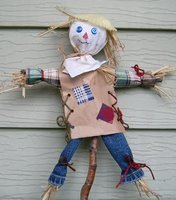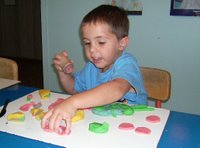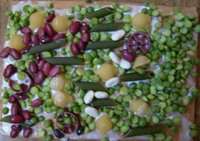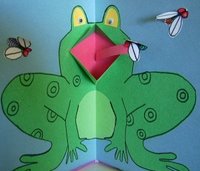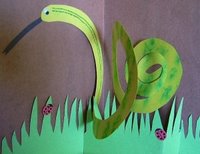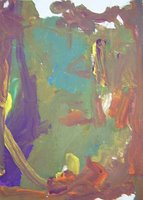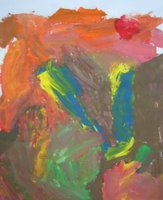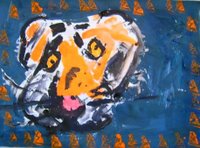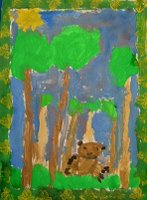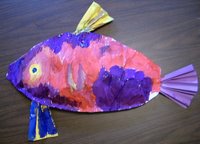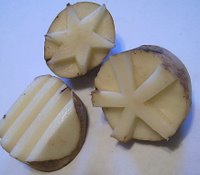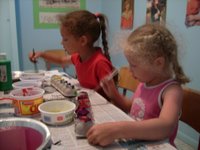
It's not to late to start planning your summer acitivities, so why not take an art class? If you live in the Blackfoot area, you can find some great ways to "get creative" at the new Blackfoot Art Center. Our Summer Sessions will include plenty of great classes for children such as art exploration classes, nature drawing, photography, and creative writing. Also, don't miss our exciting kids' workshops. We'll be building kites, learning watercolor techniques, and making pop-up books! Space is limited, so register early. There will be three class sessions, each four weeks long, beginning the week of June 12, and ending September 2.
We also have classes for adults, including beginning drawing, pastel painting, and photography. Check out class descriptions, dates, times and sessions by downloading our current
Summer 2006 Class Schedule. This is a PDF file, so you'll need
Adobe Reader to download it. If you would like to register for a class, please download the
Class Registration Form (PDF). You'll need a separate registration form for each participant, so make as many copies as you need.
Would your group like a class scheduled just for you? Let us know what you are looking for, what you would like to learn, and when you can meet. Contact Sandra at 208-785-0828, or e-mail us at
blackfoot_artcenter@yahoo.com. See our
Summer 2006 Class Schedule for more information. You may also download our
Summer 2006 Class Flyer and make a few copies to post or to give to your friends (and their little artists). Remember, classes start the week of June 12 and class sizes are small, so please register early.
Here is a list of art classes being offered during the three upcoming Summer 2006 sessions. Use the above links to download detailed class descriptions, information, and registration forms.
Session 1 - June 12 through July 6
Session 2 - July 10 through August 6
Session 3 - August 7 through September 2
Art Adventures! Tuesdays, 1:00 to 2:15 PM - Sessions 1, 3
Ages 7 - 12: Art exploration utilizing a variety of art forms and media. Activities include both 2- and 3-dimensional projects.
$3.00 materials fee plus $21.00 tuition for three week session (Session 1)
$3.00 materials fee plus $24.00 tuition for four week session (Session 3)
Nature Drawing! Tuesdays, 1:00 to 2:15 PM - Session 2
Ages 8 - 14: This class will provide opportunities to enhance observation skills through the careful study and depiction of natural objects, usually in an outdoor setting.
$24.00 tuition for four week session
It's a Snap! Basic Photography 1. Tuesdays, 3:00 to 4:15 PM - Sessions 1, 3
Ages 8 - up: Students will learn better approaches to better photography using a digital, disposable, or 35mm camera. In-class peer evaluations of weekly work.
$18.00 tuition for three week session (Session 1)
$24.oo tuition for four week session (Session 3)
It's a Snap! Basic Photography 2. Tuesdays, 3:00 to 4:15 PM - Session 2
Ages 8 - up: Continuing photography class that goes beyond the basics learned in Basic Photo1. Students will learn more refined photography techniques, and complete more challenging weekly outside assignments.
$24.00 tuition for four week session
Art is Fun! Wednesdays, 1:00 to 2:00 PM - Sessions 1, 3
Ages 4 - 6: Unique arts and crafts activities for 4- to 6-year olds. This class is about creative fun as we playfully explore a variety of art media.
$3.00 materials fee plus $24.00 tuition for four week session
Craft It! Wednesdays, 1:00 to 2:00 PM - Session 2
Ages 5 - 8: A hands-on approach to explorating new art forms and interesting materials, while encouraging creativity and experimentation.
$3.00 materials fee plus $24.00 tuition for four week session
Let's Draw! Wednesdays, 2:30 to 3:30 PM - Sessions 2, 3
Ages 5 - 8: Using the five elements of shape, even young children can learn to draw what they see. Includes warm-up activities and skill-building drawing projects.
$25.00 tuition for four week session
Learn to Draw! Wednesdays, 4:00 to 5:30 PM - Sessions 1, 3
Ages 9 - 15: Students will be encouraged to develop their own personnal drawing styles as they learn to develop better observational skills and practice newly discovered drawing techniques.
$30.00 tuition for four week session
Creative Writing! Thursdays, 1:00 to 2:15 PM - Sessions 2, 3
Ages 9 - up: Young people who love to write will be motivated to write more about the things that really matter to them. Word games, unique writing prompts, and fun writing ideas and projects. At-home assignments that can be shared in class.
$25.00 tuition for four week session
Art Adventures; Just for HomeschoolersAges 5 - 12: Ongoing homeschool art explorations. Contact us about setting up a day and time for your homeschool group.
$25.00 per 5 week session
Creative Photography 1. Saturdays, 10:30 AM to 12:00 PM - Session 1
Adults (ages 13 - up): Using a digital, disposable, or 35mm camera, students will learn creative techniques to taking better pictures that will improve photographic skills. Weekly assignments outside of class.
$25.00 tuition for four week session
Creative Photography 2. Saturdays, 10:30 AM to 12 PM - Session 2
Adults (ages 13 - up): Continuing class, this time focusing on the creative and artistic aspects of photography. Weekly outside assignments.
$25.00 tuition for four week session
Adults Learn to Draw. Thursdays 7:00 to 9:00 PM - Special Session
Session dates are May 18 to June 15 and June 22 to July 20 (10 weeks total)
Adults (ages 13 - up): Basic drawing course designed for adults. Learn to draw what you actually see through various exercises and drawing projects. Some weekly at-home assignments, no drawing experience required.
$40.00 tuition for 5 week session.
Introduction to Pastel Painting. Thursdays, 7:00 to 9:00 PM - Special Session
August 3 to Agust 31 (5 weeks)
Students will discover and experience the pastel medium through demonstration, creative experimentation, and individual interpretations of various subjects using medium and soft pastels.
$5.00 materials fee plus $40.00 tuition for four week session
WORKSHOPSLet's Paint the Sky! Monday, June 19, 1:00 to 5:00 PM
Ages 8 - up: We'll build and fly three different kites in this afternoon kite-making workshop. Bring at least one roll of kitestring. Snack break included.
$3.00 materials fee plus $24 workshop tuition fee
Wonderful Watercolor! Monday, July 17, 1:00 to 5:00 PM
Ages 8 - up: A hands-on try-it! class where children will be re-introduced to the watercolor medium and how to achieve satisfying results through the use of quality paints, brushes, and papers. Plein-aire (outdoor) painting and snack break included.
$3.00 materials fee plus $24 workshop tuition fee
Make a Pop-Up Book! Monday, August 14, 1:00 - 5:00 PM
Ages 8 - up: Paper folding magic will turn a simple made-up story into a real page-turner!
Snack break included.
$3.00 materials fee plus $24 workshop tuition fee
Easier-Than-Tole-Painting Workshop. Saturday, August 26, 10:00 AM to 2:00 PM
Adults (ages 13 - up): Bring an unfinished wood item or a clay pot and learn how to decorate it without using brushes. We'll create foam rubber stamps uniquely designed by YOU. You'll love these techniques, and the results are lovely! Bring a sack lunch if desired.
$40.00 - includes all materials
except item to be painted.
Please see complete class descriptions, registration and cancellation policies, and sibling discount details by downloading the
Class Schedule - 2006 Class Sessions. Download
Class Registration Form here.
 Here is our December workshop schedule.
Here is our December workshop schedule.









